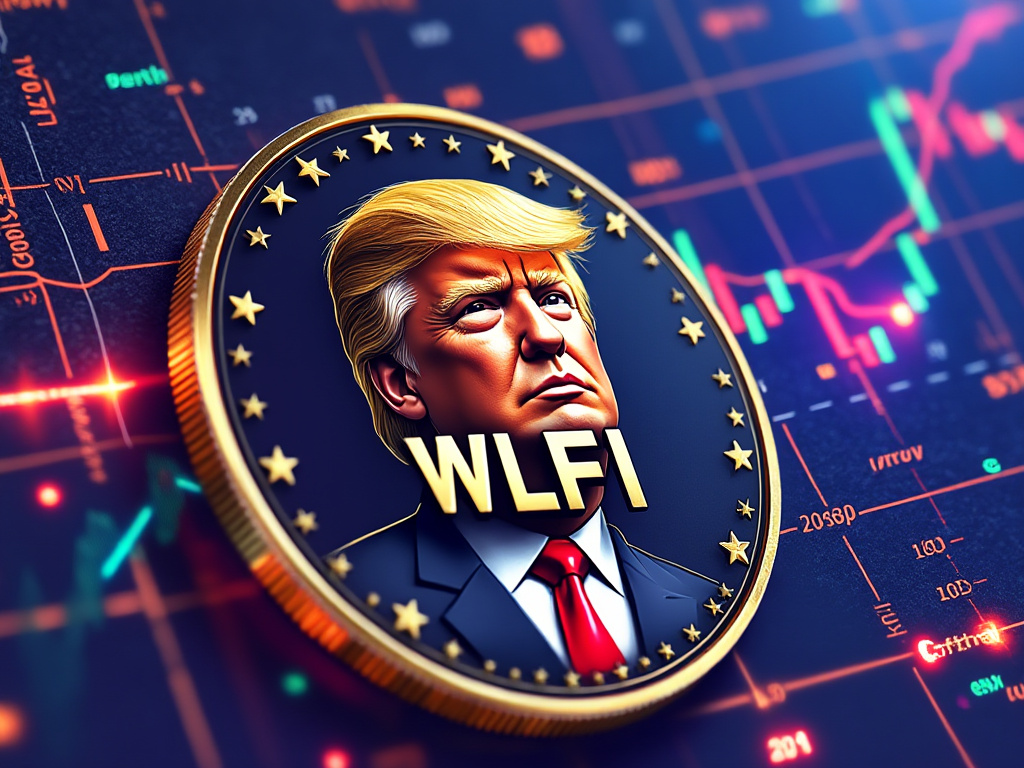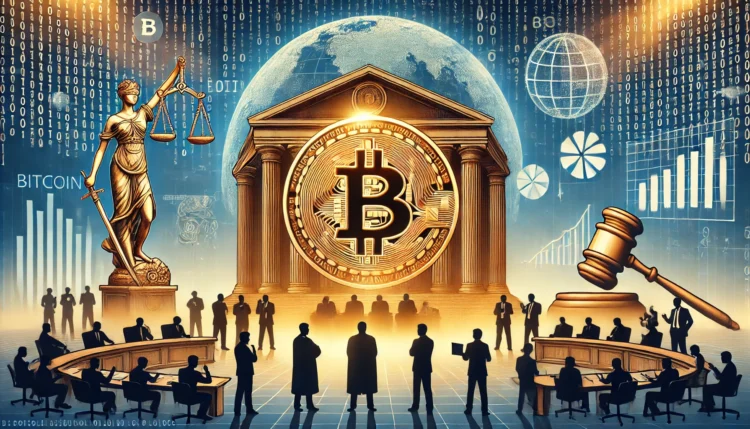The world of cryptocurrency and decentralized finance (DeFi) stands at a pivotal crossroads where politics, finance, and technology converge with profound implications. Far from being a purely technological innovation, this evolving ecosystem is deeply entangled with geopolitical strategies, regulatory ambitions, and institutional interests that challenge the foundational ideals of decentralization and financial freedom.
As governments roll out Central Bank Digital Currencies (CBDCs) and regulators tighten oversight, traditional financial institutions and DeFi protocols engage in a complex contest for capital and influence. Meanwhile, technological advances promise greater financial inclusion but also raise concerns about privacy and surveillance.
This article examines the complex power dynamics currently shaping the crypto and DeFi landscape. It provides insight into the convergence of political agendas, financial strategies, and technological advancements, and how these forces collectively redefine the future of money and governance in the digital era.
DeFi’s Entanglement with Politics, Finance, and Tech
Decentralized Finance (DeFi) protocols aim to provide open access to lending, exchanges, and derivatives. However, their operations are subject to geopolitical influences. Recent events, such as the U.S. House Financial Services Committee’s proposed digital-asset market-structure bill in April 2025, which seeks to classify tokens as securities or commodities, and the CBDC pilots in 13 G20 countries that combine blockchain technology with state monetary control, illustrate this interplay.
The core idea is that DeFi’s development is not isolated. Instead, it represents a dynamic arena where political objectives, established financial institutions, and technological advancements compete.
Political Undercurrents in Crypto: Crypto Regulation and State Control

Regulators worldwide are intensifying their oversight of digital assets. In the U.S., the SEC’s Crypto Task Force held roundtables to establish disclosure and custody standards for tokens and stablecoins. Across the Atlantic, the EU’s MiCA regulation began its authorization phase in late 2024, requiring licenses for service providers and outlining issuer duties.
Despite DeFi’s emphasis on decentralization, numerous central banks have initiated CBDC pilots. South Korea’s “Hangang“ pilot will test retail payments in 2025, while the Bank of Korea has its own trial underway until June 2025. These initiatives demonstrate governments’ adoption of blockchain’s efficiency while maintaining control over issuance and surveillance.
Politicians are increasingly aware of crypto’s potential in campaign finance. El Salvador’s adoption of Bitcoin under President Bukele served as both a social experiment and a political rallying point. U.S. candidates, such as Robert F. Kennedy Jr., are promoting crypto-friendly platforms to attract younger voters amidst discussions about Federal Reserve independence.
Authoritarian regimes and sanctioned nations are also leveraging crypto’s cross-border capabilities. Russia and Iran have reportedly utilized cryptocurrency to circumvent financial sanctions, while citizens in countries experiencing hyperinflation, such as Argentina and Venezuela, are employing stablecoins to safeguard themselves against collapsing fiat currencies.
Financial Establishments vs. DeFi
DeFi poses a significant threat to traditional banking systems. Automated lending and borrowing protocols, exemplified by Aave and Compound, bypass banks by allowing users to lock substantial collateral “on-chain.” These DeFi protocols offer competitive yields, attracting capital that might otherwise be held in traditional money-market funds, thus directly challenging banks’ intermediary role.
Wall Street exhibits a divided response to DeFi. While BlackRock advocates for clearer SEC regulations regarding tokenization and staking, indicating institutional interest, other firms are lobbying Congress to limit DeFi’s growth, expressing concerns about fraud and market manipulation reminiscent of past financial instabilities.

Stablecoins represent a blend of traditional finance and technological innovation. U.S. dollar-backed stablecoins, such as USDC, tend to strengthen the dominance of the dollar. Conversely, stablecoins pegged to algorithms or foreign currencies seek to disrupt this hegemony. Currently, the total market capitalization of stablecoins is approximately $200 billion. These digital assets operate within a regulatory ambiguous landscape, although legislative bodies are actively considering new regulatory frameworks.
Technology: The Double-Edged Sword
Permissionless networks empower anyone with an internet connection to create markets, lend, or trade without gatekeepers. This democratization can expand financial inclusion, particularly in regions underserved by banks.
Yet programmable tokens and CBDCs pose surveillance risks. Unlike bearer cash, digital payments on a blockchain can be tracked, analyzed by AI, and potentially censored or reversible at the behest of authorities—a scenario critics warn could usher in unprecedented state scrutiny.
Tech giants quietly influence Web3 infrastructure. Microsoft, Amazon Web Services, and ConsenSys offer blockchain-as-a-service (BaaS) solutions, while Facebook’s Diem project (rebranded but still in development) aims for digital identity integration. Their involvement raises questions about whether Web3 will truly escape the shadow of Big Tech.
Case Studies and Examples
China’s Digital Yuan pilot grants the state total visibility over transactions, a stark contrast to public blockchains like Ethereum or Solana. The divergence illustrates a broader tug-of-war between authoritarian “RegFi” and grassroots Web3.
The 2022 FTX meltdown sent shockwaves through both markets and policymakers. Investigations revealed political donations, lobbying expenditures, and potential regulatory capture, underscoring how deeply crypto scandals can entangle with traditional power structures.
During the Ukraine crisis, both humanitarian aid and sanction evasion occurred over crypto rails. Millions in donations poured into Ukrainian relief wallets, while adversaries sought to circumvent banking bans—an uncharted nexus of tech-enabled finance and wartime geopolitics.
Ethical and Political Concerns
Recent momentum for crypto legislation in Washington, fueled by support from President Trump and new legislators, has stalled. This shift coincides with Trump’s increased crypto investments and a Democratic revolt, spearheaded by Rep. Maxine Waters, who blocked a crypto hearing and proposed banning crypto ownership for presidents and Congress members. This development follows the debut of a stablecoin by Trump’s family-owned World Liberty Financial, which quickly gained significant market capitalization.

Launched in 2024, WLFI aims to advance decentralized finance (DeFi) and strengthen the U.S. dollar’s position with its stablecoin, USD1, though it has faced scrutiny. The Trump family holds a significant stake in WLFI, with Donald Trump serving as “Chief Crypto Advocate” and his sons in key roles. Notably, WLFI’s governance token, WLFI, is non-transferable and lacks economic rights, raising questions about its utility and investor appeal.
WLFI recently announced a partnership with MGX, a UAE-based investment firm, and Binance, the world’s largest cryptocurrency exchange. The centerpiece is a new stablecoin designed to compete in the increasingly crowded market of dollar-pegged digital assets. Stablecoins, unlike volatile cryptocurrencies, aim to maintain a steady value, typically pegged to fiat currencies, and are heralded for their potential to revolutionize payments, remittances, and financial inclusion.
However, the WLFI-MGX-Binance deal is not merely a commercial venture. It is a political statement, a financial gamble, and a technological experiment rolled into one. The involvement of a politically charged figure like Trump, paired with Binance’s controversial regulatory history and MGX’s international capital, creates a cocktail of interests that demands scrutiny.
Politics and Crypto: A Dangerous Liaison
The deal has raised alarms about potential conflicts of interest, as the Trump family stands to benefit financially while Donald Trump holds public office. Democratic lawmakers, including Rep. Maxine Waters and Sen. Elizabeth Warren, have expressed concerns over national security and the integrity of cryptocurrency legislation, particularly the GENIUS Act, which aims to regulate stablecoins. The intertwining of Trump’s political influence and personal financial interests has led to calls for stricter regulations and ethical guidelines.
The controversy has disrupted bipartisan efforts to establish a legal framework for cryptocurrencies in the U.S. A scheduled hearing on crypto regulation was cancelled due to Democratic opposition, highlighting the challenges of navigating the intersection of politics and emerging financial technologies.
In the United States, U.S. Senator Chris Murphy (D-Conn.) has introduced the Modern Emoluments and Malfeasance Enforcement Act, or “MEME Act,” a sweeping bill designed to prohibit the President, members of Congress, and their immediate families from issuing, sponsoring, or promoting memecoins and other digital assets. The legislation comes in direct response to the launch of “Trump Coin,” a meme cryptocurrency tied to President Donald Trump, which Murphy has called “the biggest corruption scandal in the history of the White House”.
The MEME Act targets what Murphy and other critics see as a dangerous new avenue for political corruption. Trump Coin, launched shortly before Inauguration Day, has offered holders exclusive perks-including invitations to a White House gala-and has reportedly attracted major investments, including $2 billion from Abu Dhabi through the Trump family’s stablecoin ventures. Murphy argues these actions allow federal officials to secretly receive payments from those seeking influence, undermining public trust and the rule of law.
The Future of DeFi: Centralization vs. Decentralization
As Decentralized Finance (DeFi) expands, concerns arise about its potential for over-centralization due to its increasing significance. A key question is whether community-led governance structures can resist influence from venture capital and institutional entities.
Possible Developments:
- Government-Integrated DeFi (RegFi): DeFi protocols incorporating regulatory compliance mechanisms on public blockchains.
- Institutional Hybrid Approaches: Traditional financial institutions issuing tokenized assets on private blockchains while engaging with DeFi liquidity pools.
- Truly Decentralized DeFi: Community-governed initiatives preserving full decentralization through transparent governance and distributed infrastructure.
What It Means for the User and the Industry
Privacy and Compliance
A key challenge for DeFi users is the tension between privacy and regulation. While full anonymity on public blockchains could lead to regulatory issues, regulated platforms require user identification.
Innovation and Regulation
Finding the right level of regulatory oversight is crucial. Insufficient regulation could result in fraud and systemic instability, but excessive control might hinder financial innovation. Balancing these concerns is crucial for achieving sustainable growth and avoiding past mistakes.
The Future of DeFi
The core question remains whether DeFi will truly empower users through self-custody and borderless finance or if it will evolve into a system with new forms of centralized control.
Innovation Requires Structure and Capital

Defenders of regulatory oversight and institutional participation argue that some degree of control and capital concentration is necessary for crypto and DeFi to mature and gain mainstream adoption.
They contend that without regulatory clarity, the market risks fraud, instability, and loss of investor confidence. Similarly, institutional investment brings liquidity, professional management, and scalability that grassroots projects often lack.
Moreover, proponents argue that privacy-focused solutions and decentralized governance models are evolving and can coexist with regulated frameworks and institutional involvement, creating a hybrid ecosystem that balances freedom and security.
The Road Ahead
Crypto and DeFi’s path forward is neither purely decentralized nor wholly centralized—it lies somewhere in between, shaped by ongoing political debates, financial power plays, and rapid technological evolution. Public awareness, active governance participation, and vigilant defence of decentralization values will determine whether this new financial frontier empowers individuals or consolidates control in unexpected hands. Stay informed, engage in protocol governance, and advocate for principles that keep finance open, transparent, and resilient against undue influence.
Disclaimer: This piece is intended solely for informational purposes and should not be considered trading or investment advice. Nothing herein should be construed as financial, legal, or tax advice. Trading or investing in cryptocurrencies carries a considerable risk of financial loss. Always conduct due diligence.
If you would like to read more articles like this, visit DeFi Planet and follow us on Twitter, LinkedIn, Facebook, Instagram, and CoinMarketCap Community.
Take control of your crypto portfolio with MARKETS PRO, DeFi Planet’s suite of analytics tools.”





















